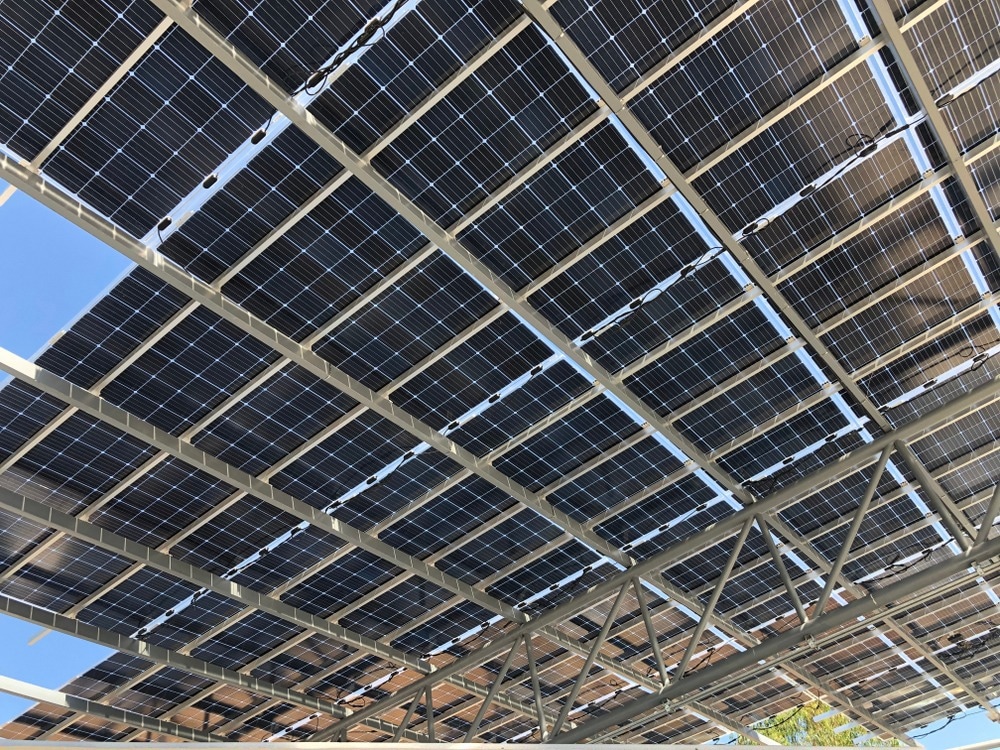In a recent article published in the journal Processes, researchers evaluated a novel hybrid power plant that combines solar energy, fossil fuels, and thermal energy storage to generate electricity sustainably and cost-effectively. They aimed to analyze the system’s performance, efficiency, and environmental impact through a case study of Neom City, a planned megacity in Saudi Arabia.

Image Credit: Jak76/Shutterstock.com
Background
Solar energy is a promising renewable source that provides abundant, clean energy. However, it faces intermittency, variability, and low conversion efficiency. Technologies like concentrating solar power (CSP) have been developed to address these issues. CSP uses mirrors or lenses to focus sunlight onto a receiver, converting it into heat to drive a turbine or heat engine for electricity production.
CSP can be integrated with conventional power plants, such as combined cycle power plants (CCPP), which use gas and steam turbines to improve efficiency and reduce emissions. It can also incorporate thermal energy storage systems to store excess heat during the day and release it at night or during cloudy periods, ensuring a stable power supply.
About the Research
In this paper, the authors proposed a hybrid CCPP based on solar energy, fossil fuel, and rock bed thermal energy storage (RBES) for Neom City, which aims to be powered entirely by renewable energy.
The system includes a solar Brayton cycle (SBC), a Rankine cycle (RC), and an RBES. The SBC uses air as the working fluid, which is compressed, heated by a solar central receiver, and expanded by a gas turbine.
The combustion chamber raises the gas turbine inlet temperature to 1000 °C using a small amount of methane. The exhaust gases from the SBC pass through the RBES, which stores heat in rocks during the day and releases it to the RC at night. The RC uses steam generated by a boiler, expanded by a steam turbine, and condensed by a condenser. The system operates for 10 hours during peak solar radiation and 14 hours during low or no solar radiation.
The researchers used MATLAB and Engineering Equation Solver (EES) software to model and simulate the system, performing a 4E analysis (energy, exergy, exergoeconomic, and environmental) to evaluate its performance. They also conducted a parametric study to examine how key parameters, such as ambient temperature, pressure ratio, gas turbine inlet temperature, and solar radiation, affect the system’s output and efficiency.
Research Findings
The outcomes revealed that the system could generate up to 13.276 MW of power, with an average energy efficiency of 37.46% and an average exergy efficiency of 42.26%. It produced more energy than it consumed from fuel, with an average electricity cost of 0.0377 USD/kWh, lower than current electricity tariffs in Saudi Arabia. The system also reduced carbon emissions by 0.104 kg CO2/kWh compared to a conventional CCPP.
The study showed that solar radiation and ambient temperature significantly affected the system's performance. Higher solar radiation increases power output, efficiency, and exergy destruction while lowering electricity costs and carbon emissions. In contrast, higher ambient temperatures reduce power output and efficiency while increasing electricity costs and emissions.
Furthermore, the authors identified components that contribute most to exergy destruction and cost. The solar receiver had the highest exergy destruction, accounting for 44.4% of the total, due to the significant temperature difference with the environment. The combustion chamber had the highest exergy cost at 14.8% due to fuel consumption and low exergy efficiency.
Applications
The hybrid system offers multiple benefits for the power sector and society. It provides reliable, flexible power generation to meet rising energy demands and reduces dependence on fossil fuels. It also decreases greenhouse gas emissions and water use in the power sector, aiding climate change mitigation and water conservation. This system can be applied in regions with similar climates, such as the Middle East and North Africa. It can integrate with renewable sources like wind and biomass to enhance sustainability.
Conclusion
In summary, the hybrid system was a promising solution for sustainable power generation in Neom City, Saudi Arabia. It achieved high energy and exergy efficiencies, low electricity costs, and reduced carbon emissions while leveraging abundant solar resources and decreasing dependence on fossil fuels.
The researchers recommended optimizing design and operation, improving integration and control, exploring social and economic impacts, and reducing system costs. They also suggested investigating other hybrid systems and thermal energy storage technologies for various locations and climates.
Disclaimer: The views expressed here are those of the author expressed in their private capacity and do not necessarily represent the views of AZoM.com Limited T/A AZoNetwork the owner and operator of this website. This disclaimer forms part of the Terms and conditions of use of this website.
Source:
Akroot, A.; Al Shammre, A.S. Economic and Technical Assessing the Hybridization of Solar Combined Cycle System with Fossil Fuel and Rock Bed Thermal Energy Storage in Neom City. Processes 2024, 12, 1433. DOI: 10.3390/pr12071433, https://www.mdpi.com/2227-9717/12/7/1433